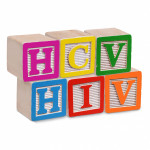Hepatitis C virus (HCV) cure rates can be quite high for those who also have HIV and cirrhosis of the liver. However, in a recent study those in this group who had been treated for HCV before did not fare as well on another round of therapy for that virus.
Researchers analyzed data from a multicenter prospective cohort study of 201 people with HIV, HCV and cirrhosis who started treatment for hep C at 13 hospitals in Spain throughout 2015. The participants were all on stable antiretroviral treatment for HIV and all had cirrhosis according to transient elastography (with a result greater than 14.6 kilopascals, or KPa) or by sonographic, endoscopic or clinical data or some combination of these measures.
Findings were presented at the 2017 Conference on Retroviruses and Opportunistic Infections (CROI) in Seattle.
A total of 37.1 percent of the participants had genotype 1a of HCV, 13.4 percent had genotype 1b, 18.8 percent had genotype 3 and 25.2 percent had genotype 4.
The baseline median transient elastography result was 20.7 KPa. A total of 75.7 percent had Child Pugh A liver disease, indicating milder cirrhosis; 17.8 percent had experienced decompensated cirrhosis; and 51.5 percent had been treated for HCV before, including 40.4 percent who were null responders to treatment.
There were data on HCV viral load 12 weeks after treatment for 170 of the cohort members. A total of 25.3 percent were treated with Harvoni plus ribavirin, 20 percent with Sovaldi (sofosbuvir), Olysio (simeprevir) and ribavirin, 15.3 percent with Harvoni and 14.7 percent with Sovaldi, Daklinza (daclatasvir) and ribavirin.
A total of 92.9 percent (158 of 170) of the group achieved a sustained virologic response 12 weeks after completing therapy (SVR12, considered a cure). There were no differences in cure rates according to hep C genotype. However, 88.8 percent of those who had been treated before were cured, compared with 97.5 percent of those who were treated for the first time. This difference was statistically significant, meaning it is unlikely to have occurred by chance.
The causes of treatment failure included: viral relapses (4.1 percent), loss to follow-up (1.2 percent), toxicity-related discontinuation (0.6 percent), decompensated cirrhosis (0.6 percent) and viral breakthrough (0.6 percent).
A total of 16.3 percent of the individuals needed to have their ribavirin dose adjusted, mostly because of anemia. Also, 2.4 percent developed decompensated cirrhosis while on treatment.
After 12 weeks of treatment, the participants’ transient elastography scores decreased by an average 5.6 KPa compared with their baseline levels.
To read the conference abstract, click here.







Comments
Comments